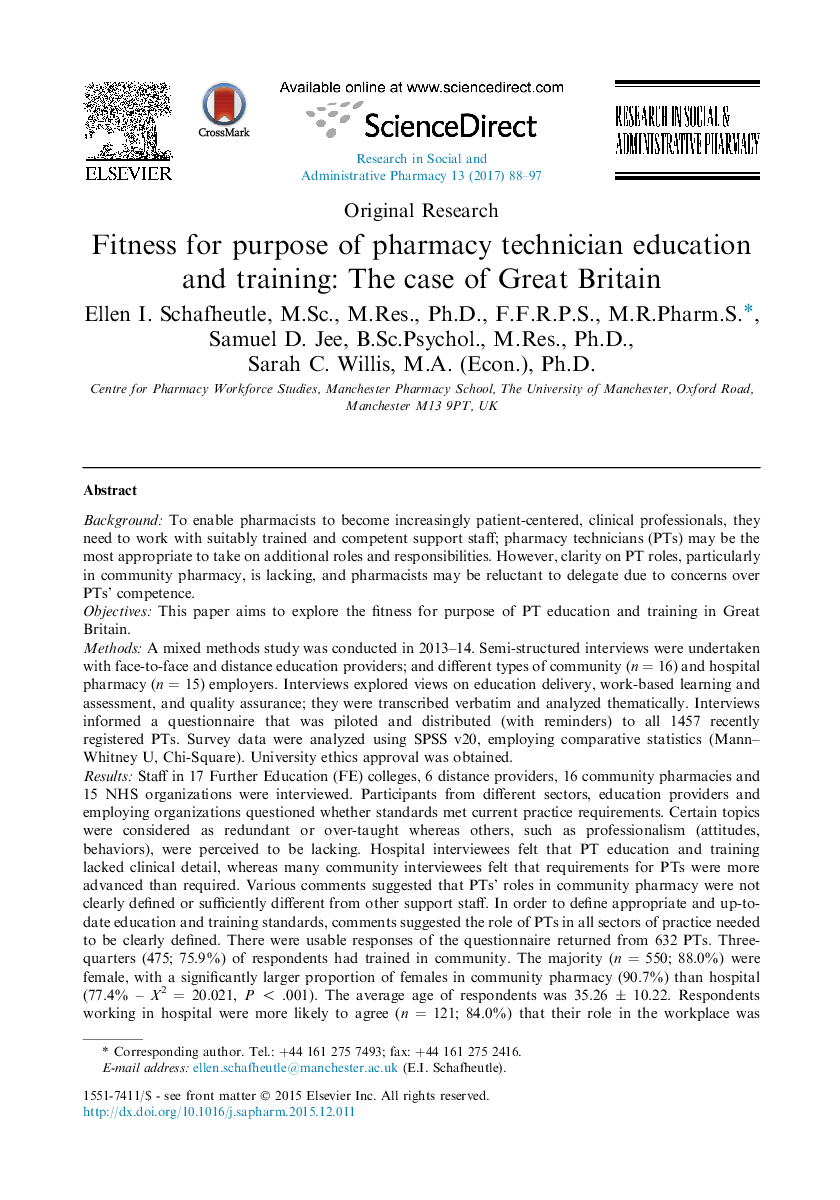| کد مقاله | کد نشریه | سال انتشار | مقاله انگلیسی | نسخه تمام متن |
|---|---|---|---|---|
| 5551379 | 1402945 | 2017 | 10 صفحه PDF | دانلود رایگان |
BackgroundTo enable pharmacists to become increasingly patient-centered, clinical professionals, they need to work with suitably trained and competent support staff; pharmacy technicians (PTs) may be the most appropriate to take on additional roles and responsibilities. However, clarity on PT roles, particularly in community pharmacy, is lacking, and pharmacists may be reluctant to delegate due to concerns over PTs' competence.ObjectivesThis paper aims to explore the fitness for purpose of PT education and training in Great Britain.MethodsA mixed methods study was conducted in 2013-14. Semi-structured interviews were undertaken with face-to-face and distance education providers; and different types of community (n = 16) and hospital pharmacy (n = 15) employers. Interviews explored views on education delivery, work-based learning and assessment, and quality assurance; they were transcribed verbatim and analyzed thematically. Interviews informed a questionnaire that was piloted and distributed (with reminders) to all 1457 recently registered PTs. Survey data were analyzed using SPSS v20, employing comparative statistics (Mann-Whitney U, Chi-Square). University ethics approval was obtained.ResultsStaff in 17 Further Education (FE) colleges, 6 distance providers, 16 community pharmacies and 15 NHS organizations were interviewed. Participants from different sectors, education providers and employing organizations questioned whether standards met current practice requirements. Certain topics were considered as redundant or over-taught whereas others, such as professionalism (attitudes, behaviors), were perceived to be lacking. Hospital interviewees felt that PT education and training lacked clinical detail, whereas many community interviewees felt that requirements for PTs were more advanced than required. Various comments suggested that PTs' roles in community pharmacy were not clearly defined or sufficiently different from other support staff. In order to define appropriate and up-to-date education and training standards, comments suggested the role of PTs in all sectors of practice needed to be clearly defined. There were usable responses of the questionnaire returned from 632 PTs. Three-quarters (475; 75.9%) of respondents had trained in community. The majority (n = 550; 88.0%) were female, with a significantly larger proportion of females in community pharmacy (90.7%) than hospital (77.4% - X2 = 20.021, P < .001). The average age of respondents was 35.26 ± 10.22. Respondents working in hospital were more likely to agree (n = 121; 84.0%) that their role in the workplace was clearly defined (U = 10740.500, Z = â2.563, P = .010) than their community colleagues (n = 303; 73.9%).ConclusionsRole clarity is required for PTs so that regulatory standards can be designed to meet current and future practice needs. This will support effective skill mix configurations to enable pharmacists, particularly in community, to take on extended, clinical roles.
Journal: Research in Social and Administrative Pharmacy - Volume 13, Issue 1, JanuaryâFebruary 2017, Pages 88-97
